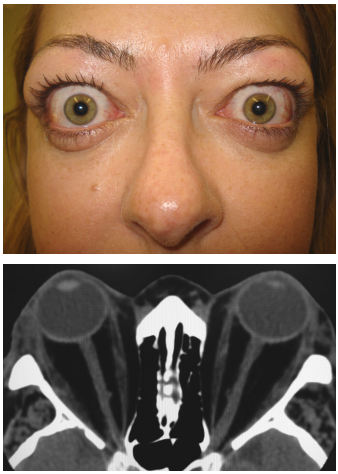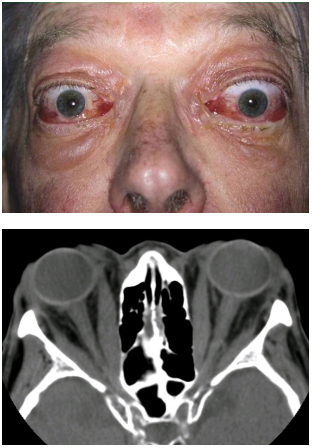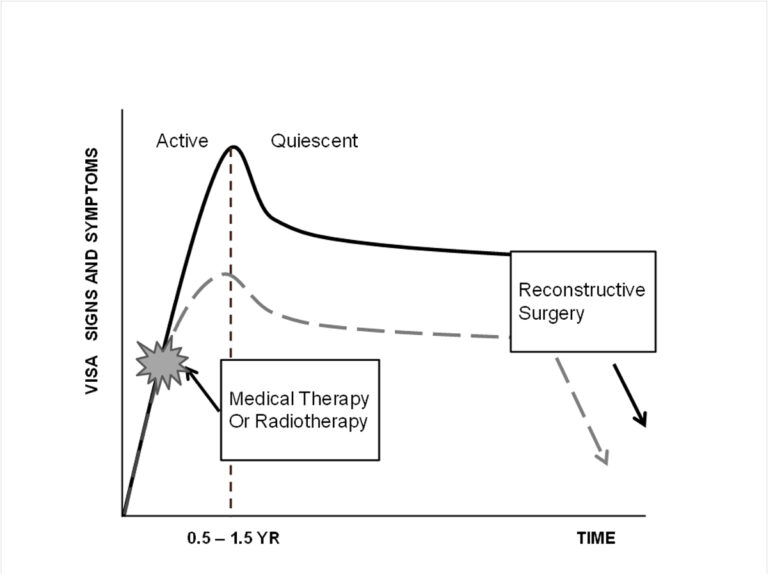TED presents with a spectrum of clinical features determined by which orbital tissues are involved. The pattern and extent of involvement are graded as “disease severity.”
Approximately 2/3 of TED patients develop primarily fat expansion, often in association with focal levator muscle inflammation, resulting in eyelid retraction, proptosis, and ocular exposure. This lipogenic phenotype typically evolves slowly in a younger, female population (Figure shows young female with proptosis and lid retraction associated with fat expansion seen on CT Scan: click to enlarge).

The remaining third have significant enlargement of one or more EOM and present with more severe features, including redness and swelling of the conjunctiva and eyelids, restricted eye movements with double vision, and dysthyroid optic neuropathy (DON) from compression of the optic nerve by the swollen EOM. This myopathic phenotype develops rapidly in an older population with a more balanced gender distribution and is likely to be associated with smoking and a positive family history of TED (Figure shows elderly man with periorbital congestion and ocular misalignment and DON. Click on images to enlarge)


TED has a biphasic course, with a progressive (“active”) phase lasting 6–18 months, followed by a stable (“inactive”) phase. These disease phases are graded as “clinical activity.” “Rundle’s curve” is a graph of orbital disease severity against time (See figure), with a steeper slope in the progressive phase reflecting more aggressive disease.
Immunomodulators and radiotherapy administered during the early active phase may limit the destructive consequences of the immune cascade. Surgery is usually performed in the post-inflammatory phase for orbital cosmesis, comfort, and function but may be needed during the progressive phase to prevent vision loss from DON or corneal breakdown.
A useful analogy is that the inflammatory phase is like a house on fire. While ignited, efforts are made to staunch the flames or allow them to smolder if not too severe. Reconstruction is not carried out while the fire is still active.
Recurrence of TED occurs in less than 10% of cases.

